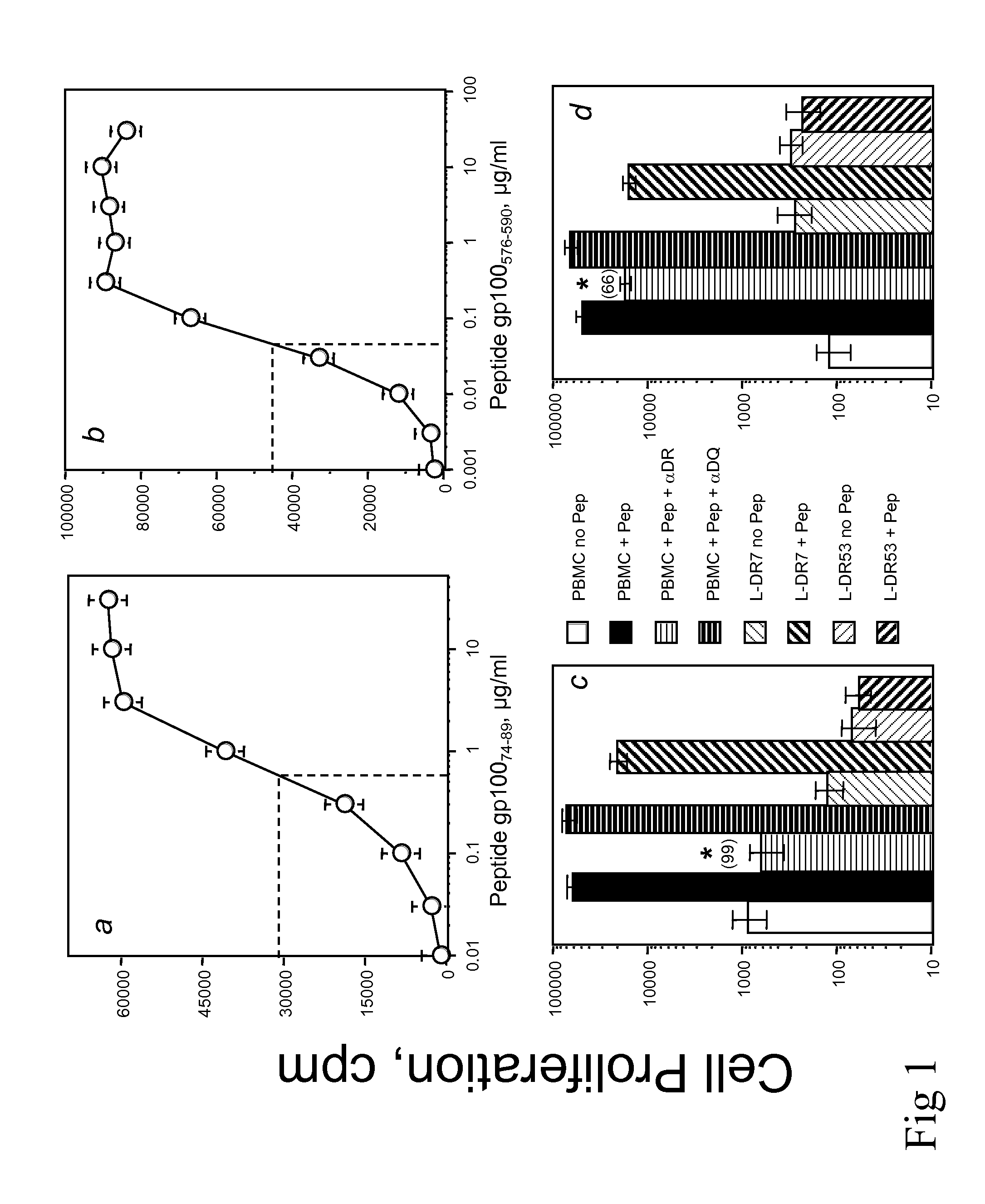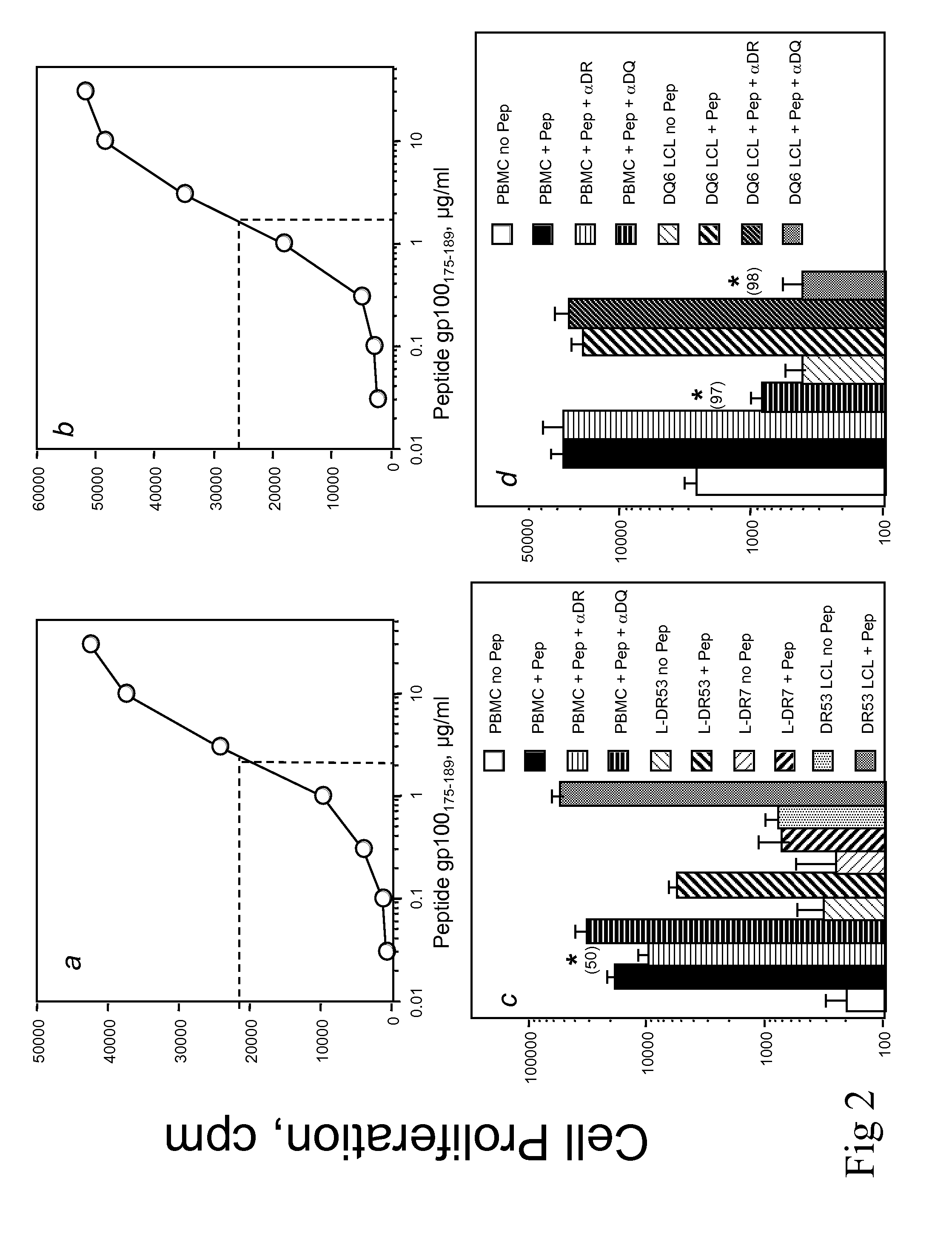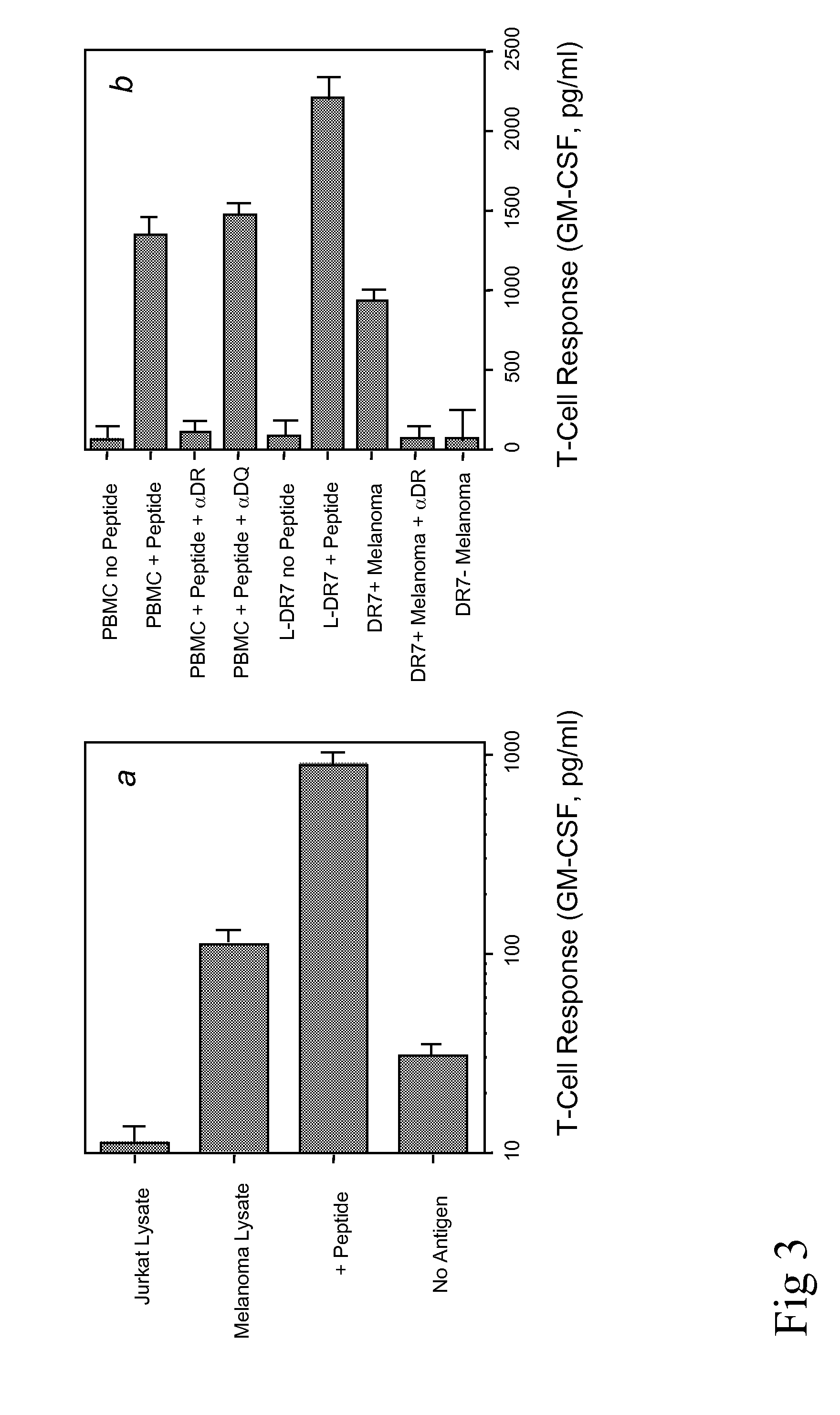Methods and materials for cancer treatment
a cancer treatment and polypeptide technology, applied in the field of polypeptides, can solve the problems of far from optimal treatment effect of these vaccines
- Summary
- Abstract
- Description
- Claims
- Application Information
AI Technical Summary
Benefits of technology
Problems solved by technology
Method used
Image
Examples
example 1
Synthetic Polypeptides and Algorithm Analysis
[0036]Potential HLA-DR promiscuous CD4+ T-cell epitopes capable of binding to more than one MHC class II allele were selected from the amino acid sequence of the gp100 antigen using the algorithm tables for three HLA-DR alleles (DRB1*0101, DRB1*0401, and DRB1*0701) published by Southwood, et al (J Immunol 160:3363 (1998). A computer program based on Microsoft Excel was created for each of the HLA-DR alleles. For each position of a 9-mer core, a value was assigned for each possible specific amino acid taking the tables published by Southwood, et al (J Immunol 160:3363 (1998). The computer program calculated the average binding (ARB) values for each possible 9mer of the gp 100 sequence. The higher the ARB value, the more likely the polypeptide will bind to the corresponding HLA-DR allele. The data in FIG. 7 demonstrate that the sequences, ARB values for each allele, ranks and rank sum values for the top 10 candidate polypeptides. Polypeptid...
example 2
In Vitro Induction of Antigen-Specific HTL using Synthetic Polypeptides
[0037]Polypeptides gp10074-89, gp100175-189 and gp100576-590 were tested for their capacity to stimulate CD4+ T cells obtained from four healthy, MHC-typed individuals in primary in vitro cultures using polypeptide-pulsed autologous dendritic cells (DC). The method used to generate tumor antigen-reactive HTL lines and clones using polypeptide-stimulated peripheral blood mononuclear cells (PBMC) was recently described in detail (Kobayashi H et al., Cancer Res 60:5228 (2000)). Briefly, DC were generated in tissue culture from adherent monocytes that were cultured for 7 days in the presence of GM-CSF and IL-4. A total of (1×104) polypeptide-pulsed DC (10 μg / ml for 2 hr) were irradiated (4,200 rad) and co-cultured with 3×104 autologous purified CD4+ T cells (using magnetic microbeads from Miltenyi Biotech) in each well of a 96-round bottom well culture plate. Seven days later, the cultures were restimulated with poly...
example 3
Antigen-Specific Proliferative Response of T Cells
[0040]Recognition of naturally processed antigen by polypeptide-reactive T-cells can be an important parameter to determine whether a predicted T-cell epitope can be used to elicit an immune response against tumor cells. HTL may recognize polypeptide / MHC class II complexes directly on tumor cells that are MHC class II positive and as a consequence the T-cells will become activated and produce cytokines that provide help to CTL or cytokines that may inhibit tumor cell growth.
[0041]T cells (3×104 / well) were mixed with irradiated APC in the presence of various concentrations of antigen (polypeptides, tumors or tumor lysates), in 96-well culture plates. APC consisted of either PBMC (1×105 / well), HLA-DR-expressing L-cells (3×104 / well), EBV-LCL or melanoma tumor cells (3×104 / well), pretreated with IFN-γ (500 U / ml for 48 h) to enhance MHC expression. Proliferation assays were incubated at 37° C. in a 5% CO2 incubator for 72 h and during the...
PUM
| Property | Measurement | Unit |
|---|---|---|
| concentration | aaaaa | aaaaa |
| concentration | aaaaa | aaaaa |
| concentration | aaaaa | aaaaa |
Abstract
Description
Claims
Application Information
 Login to View More
Login to View More - R&D Engineer
- R&D Manager
- IP Professional
- Industry Leading Data Capabilities
- Powerful AI technology
- Patent DNA Extraction
Browse by: Latest US Patents, China's latest patents, Technical Efficacy Thesaurus, Application Domain, Technology Topic, Popular Technical Reports.
© 2024 PatSnap. All rights reserved.Legal|Privacy policy|Modern Slavery Act Transparency Statement|Sitemap|About US| Contact US: help@patsnap.com










